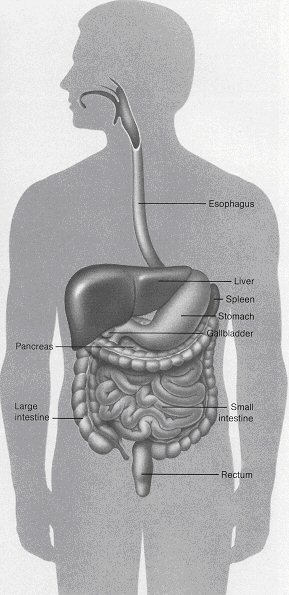By Andreas Moritz
There are four main activities in the alimentary tract of our digestive system: Ingestion, Digestion, Absorption and Elimination.
The alimentary canal begins at the mouth, passes through the thorax, abdomen and pelvis region, and ends at the anus (see Figure 1). When food is ingested, a series of digestive processes begin to take place. These can be divided into the mechanical breakdown of food through mastication (chewing) and chemical breakdown of food through enzymes. These enzymes are present in the secretions produced by glands of the digestive system.

Figure 1: The digestive system
Enzymes are minute chemical substances that cause or speed up chemical changes in other substances without themselves being changed. Digestive enzymes are contained in the saliva of the salivary glands of the mouth, the gastric juice in the stomach, the intestinal juice in the small intestine, the pancreatic juice in the pancreas, and the bile in the liver.
Absorption is the process by which tiny nutrient particles of digested food pass through the intestinal walls into the blood and lymph vessels for distribution to the cells of the body. The bowels eliminate as feces whatever food substances cannot be digested or absorbed. Fecal matter also contains bile, which carries the waste products resulting from the breakdown (catabolism) of red blood cells. In addition, one third of the excreted waste is made up of intestinal bacteria. The body can only function smoothly and efficiently if the bowel removes the daily accumulating waste every day.
Health is the natural result of balanced functioning of each of these major activities in the digestive system. On the other hand, disease arises when one or more of these functions are impaired. The presence of gallstones in the liver and gallbladder has a strong disruptive influence on digestion and absorption of food, as well as on elimination of waste.
You may share or republish this article provided you clearly mention the name of Andreas Moritz and paste a hyper link back to the post.

